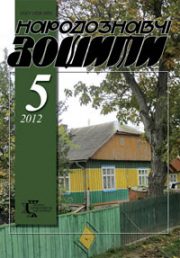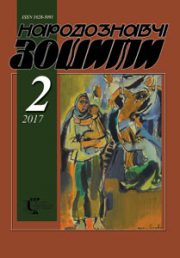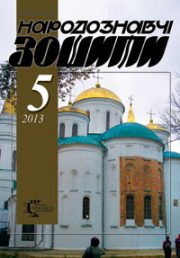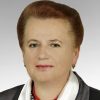The Ethnology Notebooks. 2025. № 1 (181), 110—118
UDK [7.072.2/.3.03.046.3:27-526.62](477)”09/17″
DOI https://doi.org/10.15407/nz2025.01.110
KOMARNYTSKY Andrii
- Candidate of Art History,
- Co-head of the icon-painting workshop «Alipiy»,
- Member of the National Academy of Sciences,
- 1, Maidan St. Pope John Paul I, 79070, Lviv, Ukraine,
- Contacts: e-mail: eny_andriy@ukr.net
Abstract. The article is dedicated to the scientific work of Professor Volodymyr Ovsiichuk in the field of Ukraine’s sacred tradition during the princely era, with a focus on research material related to pre-Mongol iconography. The works of the renowned Ukrainian scholar, Volodymyr Ovsiichuk, remain highly relevant over time. His contributions to Ukrainian art history can stand alongside the works of Ukrainian historian Mykhailo Hrushevsky. The article highlights that Ovsiichuk placed particular emphasis on studying the sacred art of Ukraine, specifically the period of the princely era. He was one of the first scholars in Ukrainian science to radically rethink the genesis of the Kyivan-Ukrainian sacred tradition, firmly rejecting Soviet-Russian imperial stereotypes. Over the more than 30 years of Ukrainian independence, the Galician-Volhynian iconography of the princely era has been fully analyzed only in the works of Professor Volodymyr Ovsiichuk. Currently, Ukrainian scholarship mainly focuses on later Galician icons of the 18th—19th centuries, emphasizing folk iconography. Meanwhile, interest in high-quality Galician-Volhynian iconography from the 14th—16th centuries is limited to a small circle of domestic scholars.
The aim of the publication is to draw the attention of the Ukrainian scientific community to the significant scholarly contribution of Professor Volodymyr Ovsiichuk, particularly in the study of sacred art in the princely era of Ukraine.
The subject of the research is Volodymyr Ovsiichuk’s scientific activity.
The methodological foundation of the research consists of the principles of historicism, consistency, scientific objectivity, systematism, and comprehensiveness. The task of the article is to highlight the scientific achievements of the scholar in the field of sacred tradition of Ukraine in the princely era, with a focus on pre-Mongol iconography, based on the analysis of Ovsiichuk’s work Ukrainian Painting of the 10th—18th Centuries: The Problems of Color. Additionally, based on the scholar’s findings, the genesis of the Kyiv sacred tradition will be explored through the scientific rehabilitation of the Kyiv icon-painting school.
Keywords: pre-Mongol iconography, princely era, genesis of sacred tradition, Kyiv school, decolonization, national tradition.
Received 27.01.2025
REFERENCES
- Pavliuk, S. (2023). Historical-genetic and cultural incompatibility of Ukrainians with Muscovites. Ethnology notebooks, 1 (169), 3—13 [in Ukrainian].
- «God Has Not Abandoned Ukraine». A conversation book by His Beatitude Sviatoslav with a Polish journalist presented at UCU. Retrieved from: https://ucu.edu.ua/news/bog-ne-pokynuv-ukrayinu-v-uku-prezentuvaly-knygu-rozmovu-blazhennishogo-svyatoslava-z-polskym-zhurnalistom/ [in Ukrainian].
- Ovsiichuk, V.A. (1996). Ukrainian Painting of the 10th—18th Centuries: The Problems of Color. Lviv: Institute of Ethnology NAS of Ukraine [in Ukrainian].
- Korсунське Благовіщення. Wikipedia. Retrieved from: https://uk.wikipedia.org/wiki/%D0%9A%D0%BE%D1%80%D1%81%D1%83%D0%BD%D1%81%D1%8C%D0%BA%D0%B5_%D0%91%D0%BB%D0%B0%D0%B3%D0%BE%D0%B2%D1%96%D1%89%D0%B5%D0%BD%D0%BD%D1%8F [in Ukrainian].







